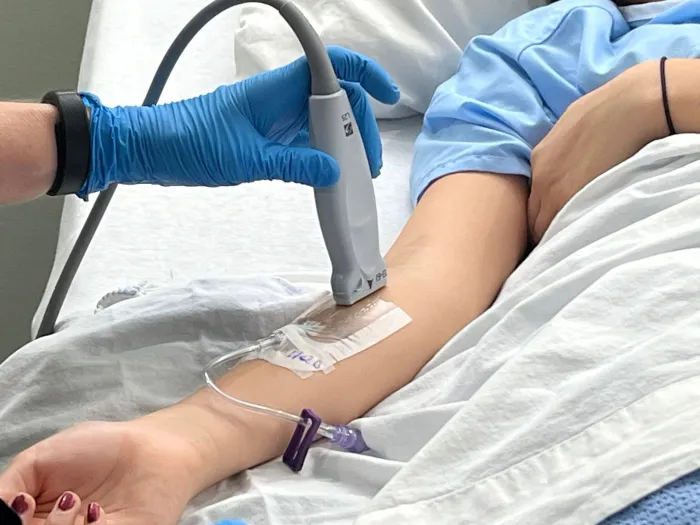The Impact of Wearable Sensors on Clinical Trials: A Comprehensive Review
In the realm of medical research and healthcare, technological advancements have continuously revolutionized traditional methodologies. Among these innovations, wearable sensors stand out as a promising tool that has reshaped the landscape of clinical trials. These compact devices, equipped with a plethora of sensors, offer real-time monitoring of various physiological parameters, enabling researchers to gather data more efficiently and accurately. This comprehensive review aims to delve into the profound impact of wearable sensors on clinical trials, exploring their advantages, challenges, and the transformative potential they hold for the future of medical research.
Evolution of Clinical Trials
To appreciate the significance of wearable sensors in clinical trials, it is essential to understand the evolution of traditional trial methodologies. Historically, clinical trials relied heavily on intermittent data collection through subjective patient reporting or periodic clinic visits. This approach was not only time-consuming but also prone to biases and inaccuracies, limiting the reliability of trial outcomes. The emergence of wearable sensors has marked a paradigm shift by enabling continuous, objective, and remote monitoring of patient’s health parameters, thereby overcoming many limitations associated with conventional methods.
Advantages of Wearable Sensors in Clinical Trials
a. Real-Time Data Collection: Wearable sensors provide researchers with access to real-time data, allowing them to monitor patients’ health parameters continuously. This capability enhances the granularity of data collection, providing insights into subtle changes that may occur over time, which might otherwise be missed during intermittent assessments.
b. Improved Patient Engagement and Compliance: By integrating seamlessly into patients’ daily lives, wearable sensors promote higher levels of engagement and compliance. Patients are more likely to adhere to the monitoring protocol when it does not disrupt their routine activities, leading to more comprehensive data collection and potentially better trial outcomes.
c. Enhanced Accuracy and Objectivity: Objective measurements obtained through wearable sensors reduce the influence of subjective biases, thereby improving the accuracy and reliability of trial data. This objective data can provide a more precise understanding of the intervention’s effects, facilitating informed decision-making by researchers and clinicians.
d. Remote Monitoring and Decentralized Trials: Wearable sensors enable remote monitoring of patients, eliminating the need for frequent clinic visits. This capability is particularly valuable for decentralized clinical trials, where participants are geographically dispersed. Remote monitoring not only reduces the burden on patients but also enhances the efficiency and cost-effectiveness of clinical trial operations.
Applications of Wearable Sensors in Clinical Trials
a. Cardiovascular Health Monitoring: Wearable sensors can track various cardiovascular parameters, such as heart rate, blood pressure, and electrocardiogram (ECG) data, allowing for continuous monitoring of patients with cardiovascular conditions. This real-time data collection enables early detection of anomalies and facilitates personalized interventions based on individual risk profiles.
b. Physical Activity and Fitness Tracking: In trials focusing on lifestyle interventions or physical rehabilitation, wearable sensors play a crucial role in monitoring patients’ activity levels, exercise adherence, and overall fitness. By providing objective metrics, these devices enable researchers to assess the efficacy of interventions and tailor exercise prescriptions to individual needs.
c. Sleep Monitoring and Chronobiology Studies: Sleep quality and circadian rhythms influence various aspects of health and disease. Wearable sensors equipped with accelerometers and biosensors can track sleep patterns, sleep stages, and circadian rhythms, providing valuable insights into the relationship between sleep disturbances and health outcomes.
d. Neurological Monitoring and Disease Management: In neurological disorders such as Parkinson’s disease and epilepsy, wearable sensors offer continuous monitoring of motor symptoms, gait abnormalities, and seizure activity. This real-time data can aid in disease management, treatment optimization, and early detection of disease progression.
Challenges and Limitations
a. Data Privacy and Security Concerns: The widespread adoption of wearable sensors raises concerns about data privacy and security. Researchers must ensure that sensitive health data collected from these devices are protected against unauthorized access or misuse, complying with stringent regulations such as the Health Insurance Portability and Accountability Act (HIPAA).
b. Standardization and Interoperability: The lack of standardized protocols and interoperable platforms poses challenges for data integration and analysis across different wearable devices. Efforts to establish common standards and interoperability frameworks are crucial to maximize the utility of wearable sensor data in clinical research.
c. Validation and Reliability: Despite their potential benefits, wearable sensors require rigorous validation to ensure the accuracy and reliability of the data they collect. Variability in sensor accuracy, calibration drift, and motion artifacts can introduce errors that may compromise the validity of trial outcomes.
d. Participant Burden and Acceptance: While wearable sensors offer numerous advantages, they also impose a burden on participants in terms of device wearability, data transmission, and battery management. Ensuring participant acceptance and adherence to wearable monitoring protocols remains a significant challenge, particularly in long-term clinical trials.
Future Directions and Opportunities
a. Integration with Artificial Intelligence and Machine Learning: The integration of wearable sensor data with advanced analytics, such as artificial intelligence and machine learning algorithms, holds immense potential for predictive modeling, early disease detection, and personalized interventions. These techniques can extract meaningful insights from vast datasets, enabling more precise patient stratification and treatment optimization.
b. Expansion to Novel Applications and Populations: As wearable sensor technology continues to evolve, its application is expanding beyond traditional clinical settings to novel domains such as preventive healthcare, remote patient monitoring, and wellness management. Furthermore, wearable sensors are increasingly being utilized in pediatric populations, elderly care, and underserved communities, offering new avenues for research and intervention.
c. Collaborative Research and Multimodal Data Integration: Collaborative research efforts involving interdisciplinary teams and multi-institutional partnerships are essential to leverage the full potential of wearable sensor technology in clinical trials. Integrating wearable sensor data with complementary modalities such as genomic, proteomic, and imaging data can provide a comprehensive understanding of disease mechanisms and treatment responses.
Conclusion
The integration of wearable sensors into clinical trials represents a transformative shift towards personalized, data-driven healthcare. These compact devices offer unprecedented opportunities for real-time monitoring, remote data collection, and personalized interventions, thereby revolutionizing the way medical research is conducted. While challenges such as data privacy, standardization, and participant acceptance persist, ongoing advancements in technology and collaborative efforts within the research community hold promise for overcoming these barriers. As we embrace the era of precision medicine, wearable sensors are poised to play a central role in shaping the future of clinical research and healthcare delivery.







